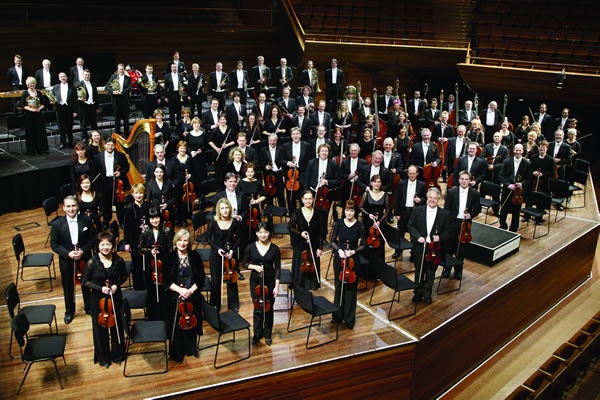
The NZSO in 2007, its 60th year.
Concerted efforts
The New Zealand Symphony Orchestra (NZSO) is our flagship classical music ensemble.
In 1940 the success of the Centennial Festival Orchestra encouraged the government to form a permanent national orchestra. The Second World War delayed the creation of the National Orchestra until 1946, and its first concert was in early 1947. No more would the country rely for its symphonic music on such orchestras, often incomplete, as the cities and larger towns could muster.
Through its subscription seasons and regional tours, the modern NZSO travels over 40,000 kilometres a year to bring the best of the orchestral repertoire to New Zealanders from Kerikeri to Invercargill. It has made an international reputation with world-class performances such as those of Mahler, Lilburn and Sibelius at the BBC Proms in 2005 and with widely acclaimed CDs such as Lilburn’s orchestral works, which was Editor’s Choice in the December 2006 edition of Gramophone.
Less in the spotlight, though, are the many ways in which the players individually contribute to the fabric of musical life. Many have private pupils, and they feature heavily on the teaching staff of the New Zealand School of Music. They tutor at summer music schools such as the Queenstown Violin Summer School and the Waitaki Summer Music Camp where people from school age to retirement age come to hone their playing skills.
The players run two charitable trusts: the Michael Monaghan Young Musicians Foundation and the Alex Lindsay Memorial Trust, which has helped launch the careers of players such as Wilma Smith, Alexa Still and Marya Martin.
Groups from within the orchestra, such as Felix the Quartet, the Nevine and Aroha String Quartets, the Iota Trio, the contemporary group Stroma, the harp/flute duo Flight and New Zealand Brass, are active throughout the year. They bring concerts to music societies throughout New Zealand and perform school concerts through the orchestra’s Education and Outreach programme.
One of the more memorable of these concerts was to a group of tough fourth-formers at Horowhenua College in 2001. The players had been warned there might be heckling or inattention. It was two days after the Twin Towers fell, and with some misgivings they decided to start the concert with the first two movements of Shostakovich’s 8th symphony, which was dedicated to ‘the victims of fascism and war’; it is a dark, discordant and angry piece. They told the pupils why they were playing it and launched straight in. After the violent and abrupt ending there was a three-second awestruck pause. Then the pupil they’d been particularly warned about simply said, ‘fu—u—ck!’ The room erupted with applause, and they were begged to play it again.
By Emma Brewerton


Community contributions